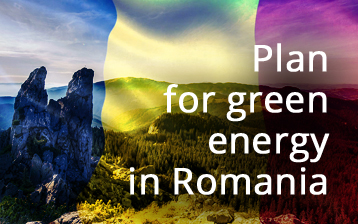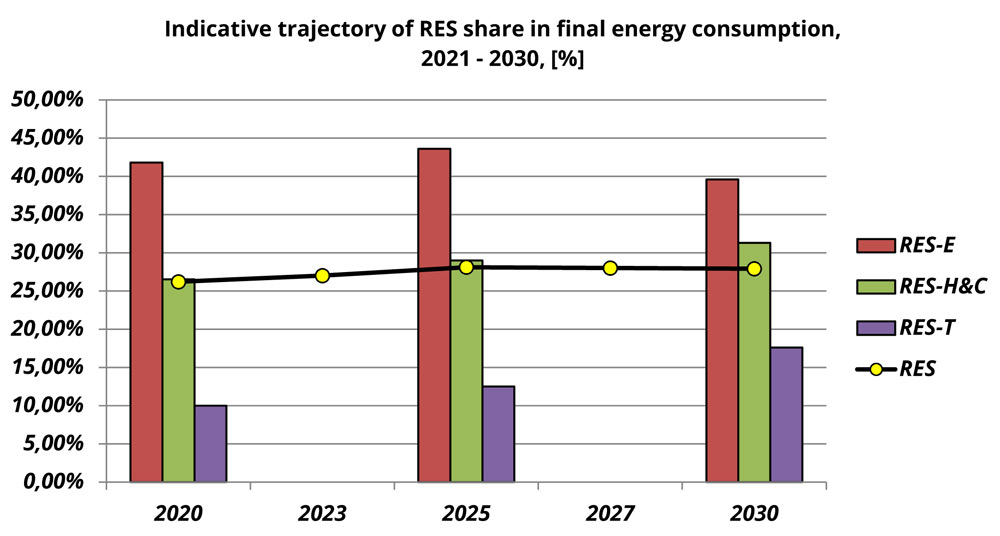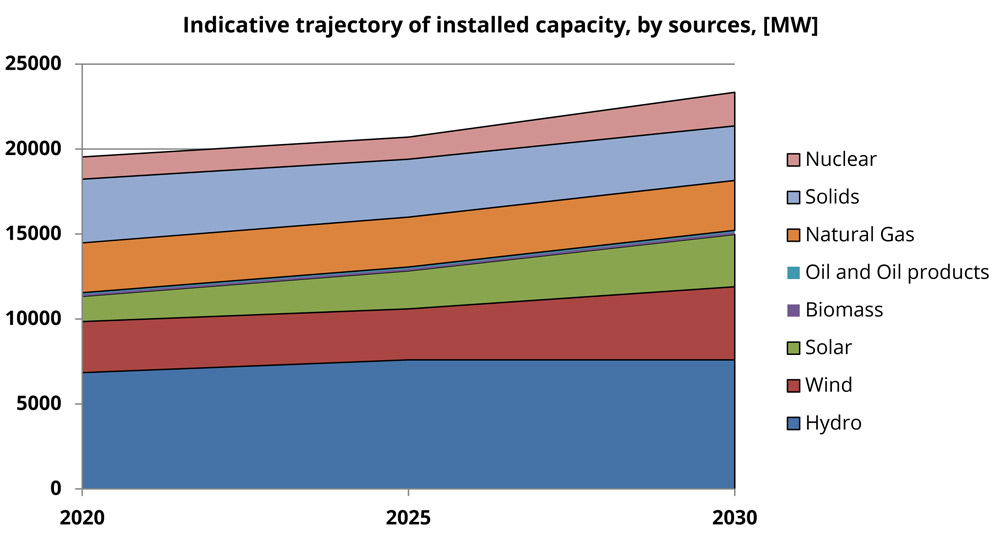With its plan for green energy, Romania aims to satisfy the guidelines established by the European Commission, in particular, linked to the provisions of the “Clean Energy for All Europeans” package.
This country, in the coming years, will register a slight increase in the impact of renewable sources in the energy sector.
Romania’s plan for clean energy for all Europeans
In fact, considering the overall share of renewable energy in gross final energy consumption, already in 2016 Romania exceeded the target of 24% set for 2020, reaching a percentage of 25%, according to Eurostat.
Its evolution, however, according to the hypotheses used to implement this plan, will slow down in the next few years, reaching 26.2% in 2020 and 27.9% by 2030. In the following chart, you can also see how these percentages translate in the electricity, transport and heating/cooling sectors.
Specifically, this country will try to achieve the objectives set by investing in different technologies. As can be seen in the graph of the trajectories indicative of the installed capacity, the areas of solar PV, wind and hydroelectric power will have a great influence in the electricity sector. On the other hand, nuclear and biomass’ ones will found less space.
Which measures will be adopted to increase the RES share?
To be able to increase long-term energy production from renewable sources, it is necessary to modernize the various infrastructures, also transforming the transmission and distribution network.
In order to stimulate the integration of RES into the energy market, Romania has come up with different solutions:
- Introduction to the possibilities of storage and aggregate production between several producers or consumers.
- The introduction of a single pricing mechanism.
- Adopt advanced technologies in the energy sector by attracting private investments and supporting scientific research.
- Organize an effective auction system, to assign contracts for the development of installed capacity for wind and solar energy
- Introduction of the concept of a virtual power plant, which aims to integrate a large number of renewable units into existing power systems, increasing the flexibility of the sources connected to the network.
In addition to this, this country plans to develop at least 10 development areas for the wind and solar PV sector by 2025. For each of these areas, the delimitation and the maximum installable capacity will be established, simplifying at the same time the authorization of the works, the connection to the network and the commissioning.








